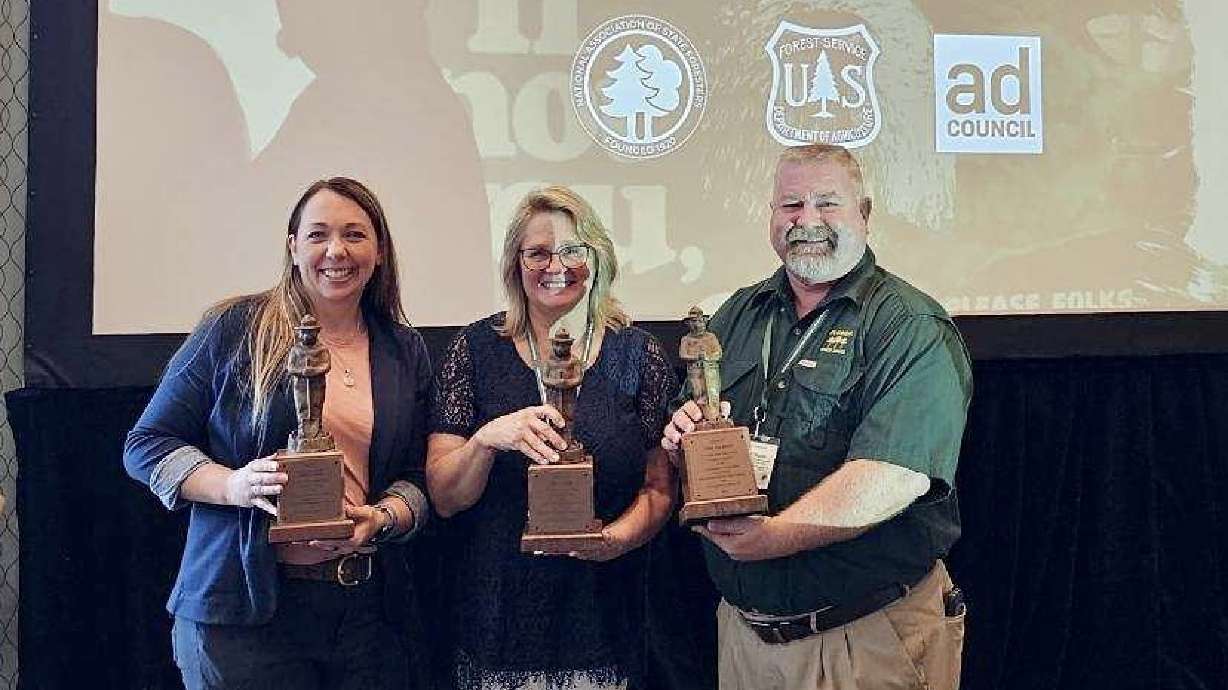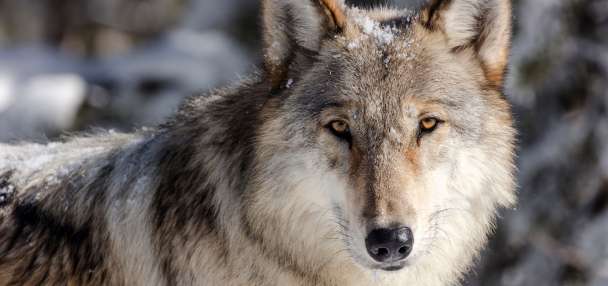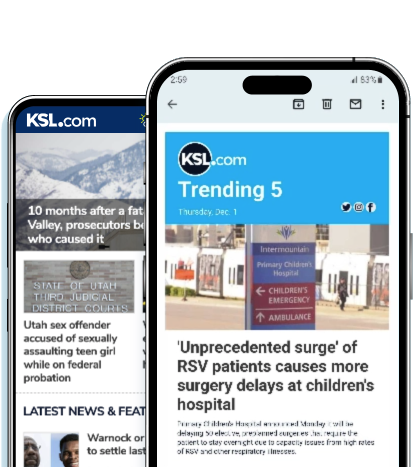Estimated read time: 3-4 minutes
This archived news story is available only for your personal, non-commercial use. Information in the story may be outdated or superseded by additional information. Reading or replaying the story in its archived form does not constitute a republication of the story.
SALT LAKE CITY — Only who can prevent forest fires? Utah is one answer.
The U.S. Forest Service and others presented Utah with the bronze level of the Smokey Bear Award during the National Association of State Foresters annual meeting in Louisiana last week, recognizing those behind the state's "Fire Sense" campaign and efforts to reduce wildfires since it launched in 2021.
Smokey Bear Awards were created in 1958, awarding people and groups who help reduce wildfires across the country. Bronze awards honor statewide wildfire prevention efforts, while gold awards recognize "exceptional wildfire prevention work done on a national scale" and silver awards recognize "regionwide service," according to the association.
Utah's honor comes as the number of human-caused wildfires has dropped significantly in recent years.
The Utah Wildfire Dashboard, a joint venture between the Utah Division of Forestry, Fire and State Lands and the Bureau of Land Management, reports 288 human-caused wildfires, as of Monday morning. These account for about 39% of all of the state's wildfires this year.
This is compared to 425 human-caused fires at the same point of the season last year, 525 in 2021 and a whopping 839 in 2020, according to past state fire reports issued toward the end of September.
"We launched this campaign to raise awareness surrounding the impact our behaviors as humans have on wildfire starts. Over the past two years, we have seen a drastic decrease in human-caused starts as we have seen Utahns implement 'Fire Sense,'" said Kayli Guild, fire prevention and communications coordinator for the Utah Division of Forestry, Fire and State Lands, in a statement Monday.
Gov. Spencer Cox and state natural resource officials launched "Fire Sense" in May 2021, during the middle of Utah's dire drought situation and after Utah ended up setting a record the year before.
There ended up being 1,500 different wildfire starts across the state in 2020, more than three-fourths of which were sparked by human causes. The state broke its human-caused fire record by over 250 fires.
As bad as 2020 was, wildfire data indicated 2021 could be worse without any sort of intervention. Utah reported 227 human-caused fire starts by mid-May, a 164% increase from the same time the year before and much higher than the previous five years.
Advertisements reminding Utahns and state visitors of the wildfire prevention basics, such as dousing a campfire before leaving a campsite, not driving over dry vegetation and a whole host of other tips were pushed digitally and through broadcast mediums, as a part of the campaign.
The number of human-caused starts continued into July before the trend dropped significantly. While this past winter's record snowpack and strong monsoons are also factors in this year's fire decline, Guild points out that human-caused wildfire starts are down about 60% since the campaign began two years ago.
Other state and federal forestry and land managers say interagency partnerships and help from the public over the past two years are large reasons for this success. Lucas Minton, fire director of the U.S. Forest Service's Intermountain region, said the work is "vital" because Utah's growth is adding more wildland-urban interface, locations where homes are next door to forest vegetation, making them vulnerable to wildfire damage.
While wildfires are down significantly, Guild adds the program isn't going anywhere anytime soon because of these risks that can rekindle in the future.
"This campaign is just a few years old, but has been a huge success. That doesn't mean we can return to our old habits," she said. "We must remain vigilant and always use our 'Fire Sense.'"









